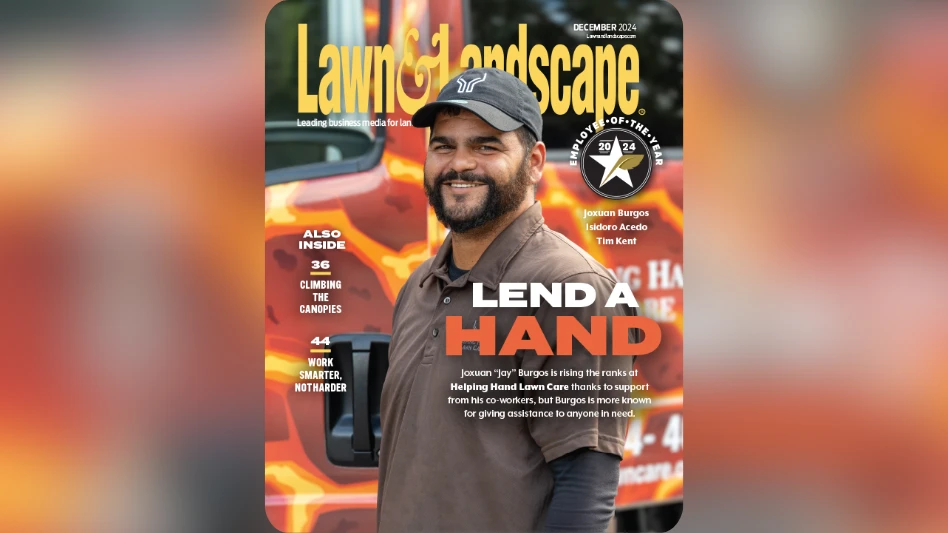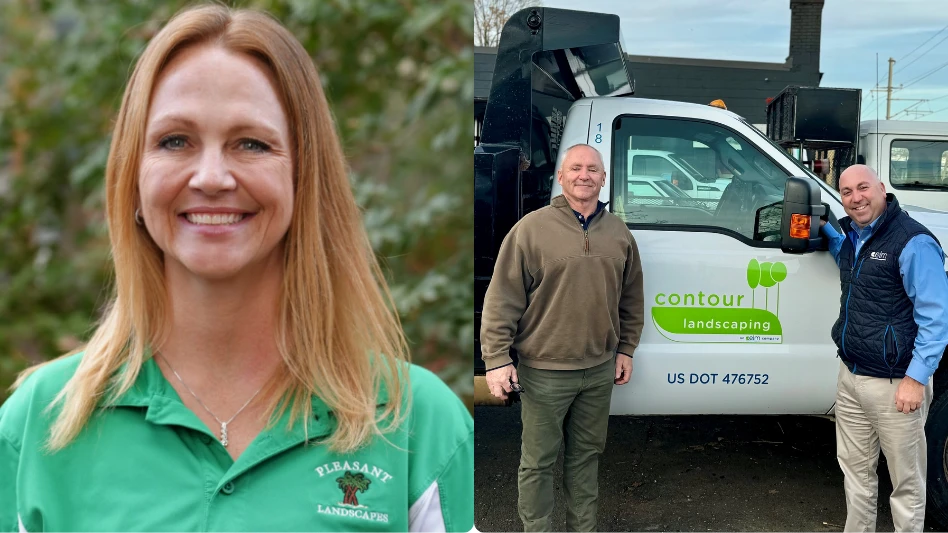 Getting things done: Contractors are turning to technology to make their crews more productive and profitable. Photo: Ford
Getting things done: Contractors are turning to technology to make their crews more productive and profitable. Photo: Ford
As time gets tight, lawn and landscape professionals need to squeeze every bit of work out of each day that they can. But some days, there’s more to do than hours to do it, so resourceful business owners find out how to be more productive. These days, that means mobile technology – smartphones, mobile offices and laptops – that allow sales teams and crews to stay in constant contact with customers and each other.
Stand by Your Van
Three years ago, David Van Zelst realized he was spending too much time in front of his windshield and not in front of his customers. So he moved his office into a van.
His company, Illinois-based Van Zelst, covers the northern Chicago suburbs and parts of Wisconsin, so he was driving. A lot.
His custom Ford Econoline had a swivel chair, desk, computer and a printer in the rear cabin. A driver (one of his employees) would pick Van Zelst up every morning at his house and drop him off again in the evening.
He was a little concerned about what customers might think – An office in a van? Really? – but they all liked it. “I had many compliments in terms of what a great idea it was,” he says. “As a whole, people really liked it and embraced it because they were able to interact with me personally and have me more involved.
“When using this truck, I am never concerned about sitting in traffic or the length of time from client to client,” Van Xelst adds. “When I am in that truck, I have everything: Laptop, printer, flat screen. I have everything with me during any given point during the day.”
Van Zelst says his clientele – CEOs and business owners with very high-end homes in the northern Chicago suburbs – are used to communicating instantly with all kinds of digital media, so his sales force has to oblige.
|
|
“It came out of necessity,” he says. “The types of clients we’re dealing with are very service-oriented with high expectations regarding quick communication. For me to cover the range we needed, I needed a solution that allowed me to work and have the appropriate level of time and interaction with clients.”
The $35,000 he spent on the van paid for itself during the last couple of years. Without the van, he says, he would need to work 20-hour days to maintain the same levels of productivity. And now he’s not driving down the interstate trying to talk on the phone and take notes about a potential job.
 Connected Clients Connected ClientsMore and more Americans are using mobile handsets to get online. An April 2009 survey by the Pew Research Center’s Internet & American Life Project shows that one-third of Americans (32 percent) have used a cell phone or Smartphone to access the Internet for e-mailing, instant-messaging or information-seeking. This level of mobile Internet use is up by one-third since December 2007, when 24 percent of Americans had ever used the Internet on a mobile device. On the typical day, nearly one-fifth (19 percent) of Americans use the Internet on a mobile device, up substantially from the 11 percent level recorded in December 2007. That’s a growth of 73 percent in the 16-month interval between the surveys. And American are more connected at home, too. The same Pew study shows 63 percent of adult Americans now have broadband Internet connections at home, a 15 percent increase from just a year earlier. © Kjpargeter | Dreamstime.com |
Expanding Options
Each year, more of Van Zelst’s customers are moving to e-mail or text-based communications. Half to three-quarters of his customers prefer getting materials in PDFs e-mailed to them. So the company now uses Blackberries, digital cameras and laptops, and has ramped up its use of mobile technology in the past two years.
Van Zelst says his crews already all had radios with “the normal bells and whistles,” but this year all project managers and salespeople are equipped with Nextel-integrated Blackberries, which allow them to stay in much closer contact with each other – and with clients.
“What we’re finding in our business, despite the economic climate, people are still very demanding. Their expectation of service hasn’t gone down. It’s actually gone up,” he says. “Having the capabilities to interact with people on a fast basis is absolutely essential.”
Pushing Paper
Paul Atkinson, director of sales and marketing for ULS Landscaping in Rocky View, Alberta, Canada, has equipped his entire sales team with netbooks so they can put proposals and estimates together in the field. He’s also bidding out a program for handheld devices to track crews and manage workflow digitally that he’ll roll out this winter.
“We’re very mobile,” he says. “It’s a huge labor savings. You can do way more with less. The city is a large place to be driving around; it saves tons of drive time.”
ULS, which does mostly full-service commercial work, has about 110 employees. In the winter, a lot of snow subcontractors come on board, and that number jumps to about 300.
The netbooks – small, stripped down laptops that run about $300 – let his sales team produce estimates on site. They can e-mail the documents to clients, or print them with mobile printers. Handhelds, which would also include GPS tracking software, will allow the company to move away from paper-based work orders and keep track of crew times better, Atkinson says.
“Right now, its paper for work orders,” he says, adding that a move to more mobile technology would make the company more productive. “We can manage way more people with way less. With our snow removal operations, it’s essential we have more real-time feedback for finding crews.”
Everything in One Place
This summer, Aaron Smith, general manager at Vermont-based S&D Landscapes, turned in his old cell phone for a PDA, which allows him to do more business while he’s on the road.
“We can do pretty much everything with one device,” he says. The new phone lets him send and receive e-mail, and put rough designs together for clients on site, then upload them to his main design program back at the office. He’s also going to use it to track his hours.
“What typically was done on paper and not scaled,” Smith says, is now done right away. “It cuts down a whole step; you only do it once.”
Smith had used his cell phone to stay in touch with clients and suppliers, but, as a small company (which he describes as a “man-and-a-half-type show” that does about $100,000 to $125,000 in sales), he didn’t have enough hours in the day to do everything. So he turned to the PDA to help him stay connected when he’s on the road.
Making the Leap
Van Zelst says landscape contractors need to look at their company’s technology needs before they invest in any expensive infrastructure. His company has spent “into the six figures” on its technology.
Everyone already has a phone, he says, and upgrading to a Blackberry or similar handheld device has a negligible cost. But if you want to put a laptop in every truck, that’s going to add up a lot more quickly.
 FordHigh-Tech Trucks FordHigh-Tech TrucksTwo major truck manufacturers are rolling out new models equipped with wireless capabilities that truly turn a truck into an office. For 2010, Dodge’s heavy-duty 2500 and 3500 models can come with a wireless router that turns the truck into a hotspot for up to six computers. And contractors driving Ford F-150s can choose a four-gigabyte in-dash computer. Ford Work Solutions comprises a touch screen in the middle of the dash, a wireless keyboard and a printer. It also includes hands-free calling and a Garmin navigation system. |
Paul Atkinson of ULS says contractors should roll out new technology to their workforce slowly, to make sure any bugs get worked out, and that everyone who needs it can use it properly from the beginning.
One of the most important criteria the company has for its new handheld system is that it be easy to use for someone plowing snow. “You can’t just turn it on and expect it to work,” he says. “You absolutely have to have an implementation plan.”
The author is associate editor of Lawn & Landscape magazine. E-mail him from your phone at cbowen@gie.net.

Explore the October 2009 Issue
Check out more from this issue and find your next story to read.
Latest from Lawn & Landscape
- LawnPro Partners acquires Ohio's Meehan’s Lawn Service
- Landscape Workshop acquires 2 companies in Florida
- How to use ChatGPT to enhance daily operations
- NCNLA names Oskey as executive vice president
- Wise and willing
- Case provides Metallica's James Hetfield his specially designed CTL
- Lend a hand
- What you missed this week
.jpg)





